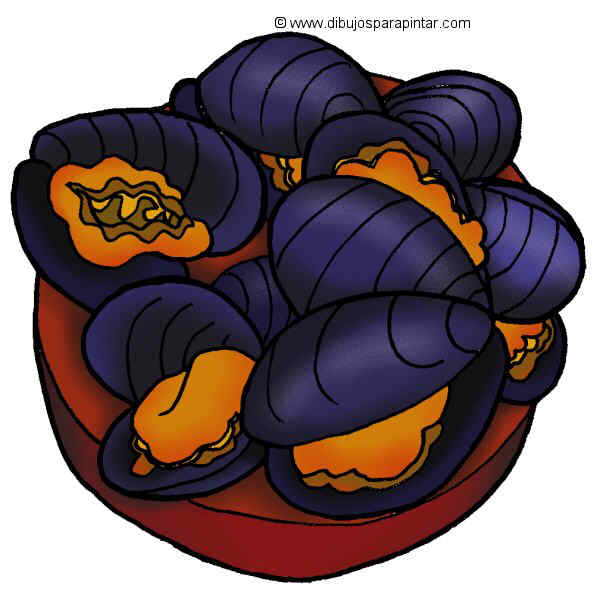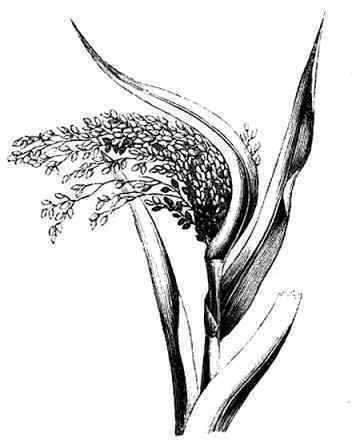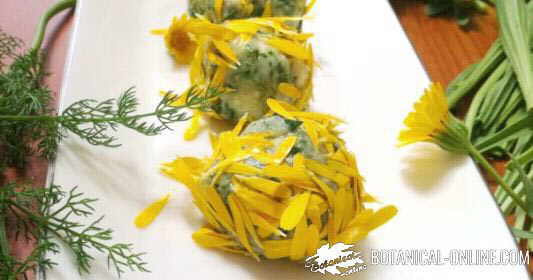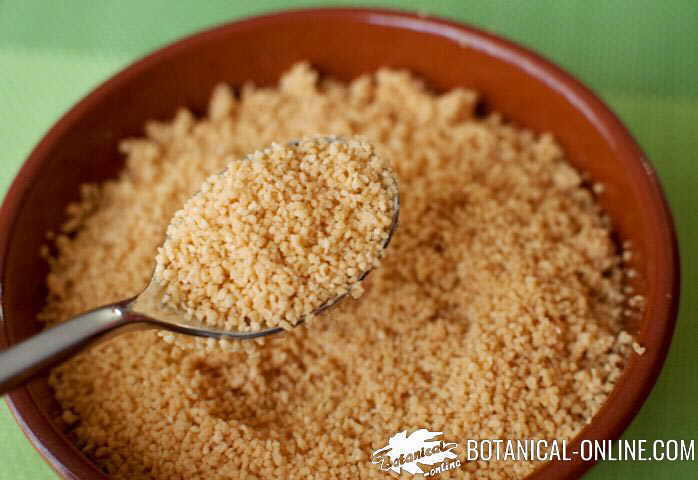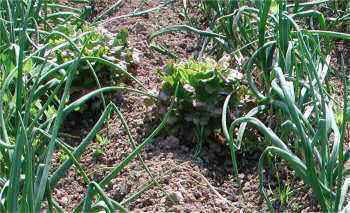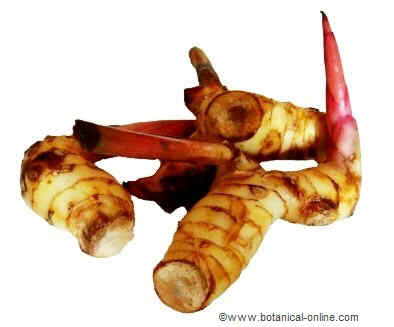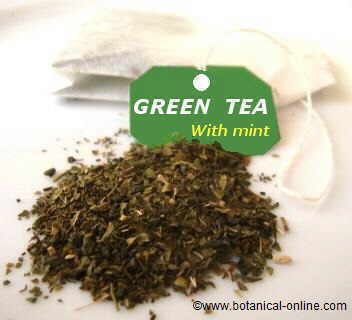Contents
- 1 Dandelion cultivation tips
- 1.1 How to grow dandelion
- 1.2 Dandelion description
- 1.3 What parts do we use from dandelion herb?
- 1.4 Dandelion climate
- 1.5 A good soil for dandelion
- 1.6 How to propagate dandelion
- 1.7 Propagation by seeds
- 1.8 Dandelion cultivation tasks
- 1.9 Flowering and harvest
- 1.10 How and when is dandelion harvest?
- 1.11 Medicinals components of dandelion
- 1.12 Dandelion pests and diseases
Dandelion cultivation tips
How to grow dandelion
Dandelion description
Dandelion (Taraxacum officinale) is a perennial plant common in meadows, pastures and fields across Europe.
– This is a perennial herbs grown as an annual.
– Underground rhizome with fusiform roots, that, when cut, delivers a milky white juice.
– Leaves in basal rosette. These are big, long, oval and sharply toothed, tapering into a long petiole.
– The flower stems appear in spring. These are cylindrical and free from leaves, bearing a flower head at the end.
– The flowers are typical of Compositae plants, formed by numerous tiny ray florets, hermaphrodite and yellow.
– It flowers in May.
– The fruits are achenes bearing plume, forming a characteristic feathery spherical pappus.
What parts do we use from dandelion herb?
There are varieties of dandelion with larger curly, leaves for trade for human consumption.
- As food the tender young leaves are taken in salads, soups or sauces, with a historical tradition dating back to the seventeenth century.
- Nutritionally, this plant is very rich in vitamin C, folic acid, beta carotene, saponins, glycosides and minerals.
- The root contains taraxacin, a bitter principle. It is used as coffee substitute.
- This plant is eaten for medicinal purposes, to increase metabolism (weight loss), for hypertension, urinary (diuretic), gout, cholesterol, expectorant and gallbladder.
Dandelion climate
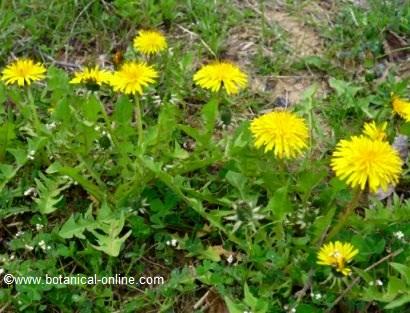
Dandelion flowers
- Native of temperate zones in Europe and parts of North America.
- Full sun or semishade
- It tolerates frost and wind.
- Plant accustomed to altitudes of 0 to 2,000 m.
A good soil for dandelion
- Dandelion tolerates a wide variety of soils, being a very undemanding plant.
- It prefers moist soils, deep and rich in organic matter.
- It is often grown in vegetable gardens after they have taken much manure (zucchini, squash, lettuce, etc..)
- It is better to provide it a a peaty sandy texture.
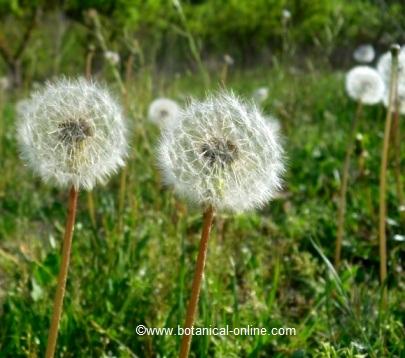
Dandelion pappus
How to propagate dandelion
Propagation by seeds
Choose the seed of a vigorous plant with long leaves and rather dense basal rosette.
Seed sowing is done in May and June
Twenty days after germination, when the plant has developed its second leaf, plant it on a seedbed or in its permanent location.
The seed field must be rich in organic matter or manure. Cover the seed with a little dirt. In large crops, planting density is 2kg. for 4.000 square meters, leaving a space between seeds of 30cm
Dandelion should be irrigated each week (1-2 times), especially in dry seasons (summer).
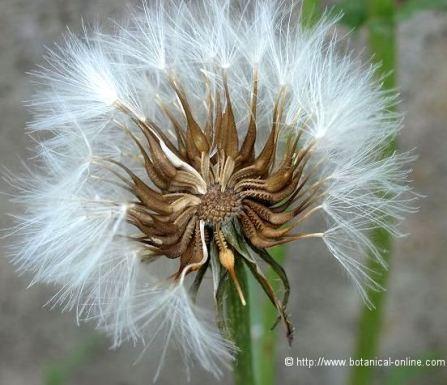
Dandelion seeds
Propagation of dandelion by division
This method involves transplanting a piece from a mature plant (two years or more of), from its rhizome.
It is done in autumn or mid February.
Divide a clump of a dandelion plant, from its rhizome. To do this, we can unearth a plant and divide it in so many rhizomes as it has developed.
Each adult plant can be separated in 3-5 clumps, That will become new plants when transplanted.
Dandelion cultivation tasks
- 15 days after transplantation, digging must be performed.
- Irrigate it weekly in dry seasons, especially in the summer.
- In late November, the leaves are cut and plants covered with green manure. With this method white leaves are obtained, which are not bitter, and are used in salads. This is also achieved by placing an empty pot on the plant.
- It is not recommended tom grow dandelion for more than three years in the same place, because of its high nutrient requirement. Dandelion is a crop that depletes soil nutrients.
Flowering and harvest
The plant flowers from March to May.
How and when is dandelion harvest?
The leaves are harvested when they are tender. Especially the first leaves of spring and autumn (March to October). They are the richest in medicinal principles (alkaloids and essential oils).
The rhizome is harvested between September and November.
The flowers are harvested for medicinal purposes.
Medicinals components of dandelion
| Components | Medicinal applications |
|
|
Dandelion pests and diseases
This plant is robust and tenacious, very often resistant to pests. Ideal for organic farming because it requires no pesticides.
Among the main pests, we can consider:
- Butterfly caterpillar (Helipalus humuli): It feeds on the plant, damaging the petiole and plant roots.
- Nematodes (Dylentchus destructor): It feeds on the roots.
![]() More information on dandelion.
More information on dandelion.

